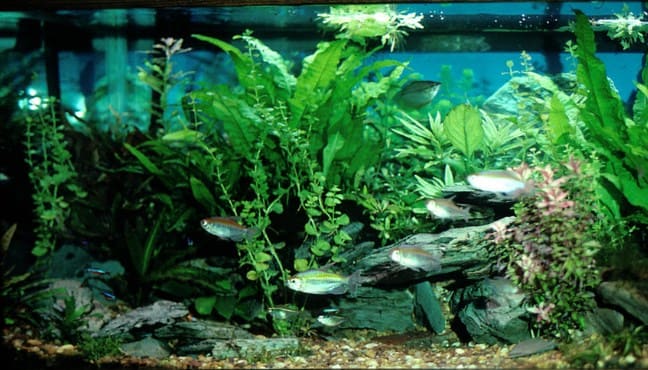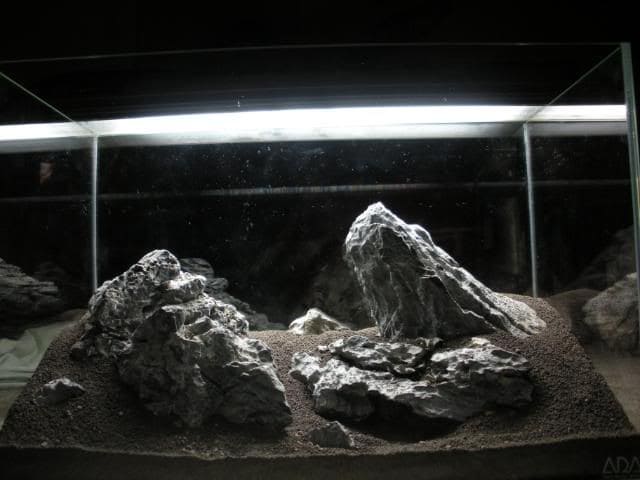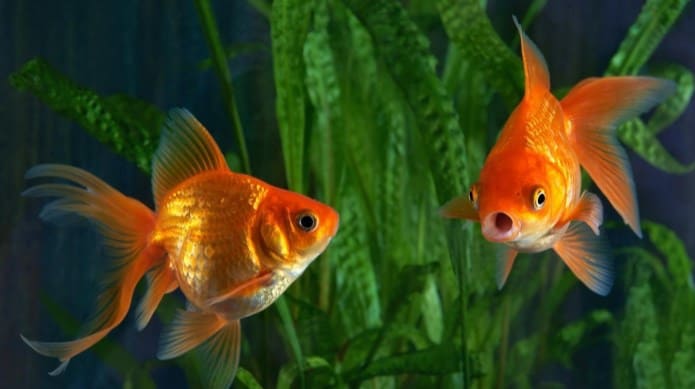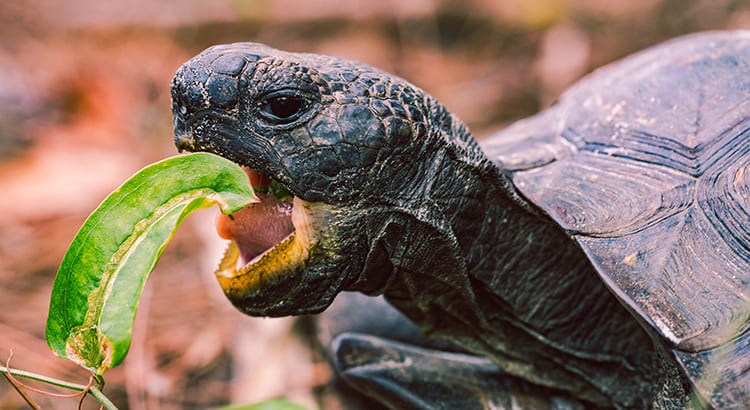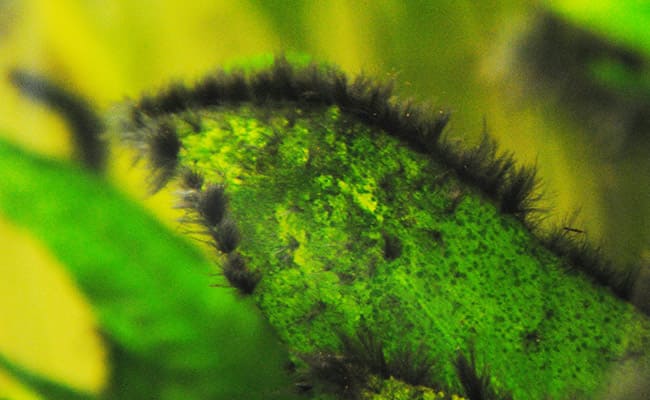Epiphytes are an integral part of a beautifully planted aquarium. Tied to roots or stones, they can be used to realize a wide variety of design ideas. But which aquatic plants are best suited? How are they properly attached? And what is there to consider? In our two-parter, we will tell you some tips for designing dreamlike underwater worlds.
Which epiphytic plants are there for the aquarium?
Epiphytes for the aquarium are aquatic plants that either grow firmly on the substrate over time or can be cultivated there. In nature, plants have optimally adapted to their environmental conditions. In fast-flowing waters, it is necessary for some species to hold on to the bottom with well-adhering roots. These plants are called rheophytes. Only these are “real” epiphytes.
There are basically three types of epiphytic plants:
- Plants that naturally gain a foothold on substrates (rheophytes)
e.g. B. small anubias such as A. nana and A. barteri, Bucephalandra, and many mosses - Plants that can be made to grow on rocks or roots
e.g. B. Microsorum species, Pogostemon helferi, Cryptocorynae beckettii - Plants that are tied down and otherwise float freely in the water
e.g. B. Riccia fluitans
Fastening epiphytes: tips and tricks
First of all, you should consider the substrate on which the plant is to be attached or to grow. Decorative objects such as roots or stones are suitable, but you can also green a planted back wall or a Hamburger mat filter with epiphytes.
Epiphytes grow more easily or more quickly on wood or porous rock such as pillow lava than on smooth substrates such as basalt. On soft surfaces such as a filter mat, they can “gain a foothold” in the aquarium particularly well.
It usually takes a few weeks for an epiphyte to grow firmly on the chosen substrate. Until then, you should secure the plant. If you want to tie the plant, a thin nylon or fishing line is suitable in addition to binding wire, but you can also use normal twine.
Fastening options for epiphytes at a glance
- binding wire
- underwater glue
- twine or fishing line
In our experience, the best method for fixing epiphytic plants to roots is always the binding wire. A fishing line or underwater glue is best for attaching aquatic plants to stones. You can find out more about this in the second part of this guide.
Tip: Properly attach mosses in the aquarium
Do you want to tie down mosses, e.g. B. on a stone, it makes sense to use a hairnet. You can get it for a few cents at drugstores. The thin net is ideal for attaching fine-feathered plants to objects almost invisibly until they are firmly established.
The easiest way to attach mosses is underwater glue. For mosses, this quick-acting gel adhesive is available in small, practical tubes.
Be sure to use the most sparingly so that all the fine leaves get enough light. It takes a little patience until the moss has grown and the result looks as desired, but this is the only way for it to develop well.
Tip: plant filter mats with epiphytes
The planting of filter mats, as they are used e.g. B. be used in Hamburg mat filter. All you have to do is cut a few slits in the mat. Now stick the roots of the epiphytes or small tufts of moss into these. It couldn’t be easier! Once the mat is overgrown, it becomes almost invisible in the aquarium.
Is Riccia fluitans suitable as an epiphytic plant in the aquarium?
Especially in the aquascaping scene, Riccia fluitans, also known as floating pond liverwort, have been very popular for years. This aquatic plant can be used to create beautiful underwater landscapes. While it was formerly used floating in the water, Takashi Amano popularized the plant in the tied form. Since then, many aquarists fans have had the desire to create an equally impressive decoration in their home aquarium – and are often bitterly disappointed.
This is simply because Riccia is not an epiphyte per se, it is merely forced to stay underwater by being tied. Artfully shaped with scissors and tweezers, it looks very pretty in the aquascaping show tank. In order to maintain the splendor, however, great effort is required. Many aquarist’s friends do not know that. You will only be able to enjoy him in the long term if you take good care of Riccia and tie it up again every now and then. If you want an easy-care option, then it is better to use mosses.
Mosses – the stars among epiphytes
Mosses have been very popular as aquarium plants for a long time. They grow well on a wide variety of substrates and we can particularly recommend them as epiphytes.
With their finely feathered leaves, mosses offer many aquarium inhabitants excellent hiding places, spawning opportunities, or grazing grounds. For example, they are now indispensable in shrimp tanks. Due to their large surface, they also offer the desired bacteria a large colonization area and thus also contribute to an improvement in water quality.
The Christmas moss, whose dense, branched shoots are reminiscent of fir branches, is one of the particularly recommended species. With it z. B. planted the back wall of the aquarium excellently. You should prune the moss every now and then and thin it out if it grows too dense. Otherwise, it does not require any special care.
Our TOP 3 of the best epiphytes for the aquarium
- Mosses (e.g. Christmas moss)
- Anubias Nana – Zwergspeerblatt
- Microsorum species
We can particularly recommend these aquarium plants because they are easy to cultivate, grow well on the substrate and root themselves on the substrate after a while.
Anubias, the spear leaf, looks particularly natural in combination with roots and mosses. They are robust and undemanding in terms of nutrients and light – making them an ideal plant for the beginner’s aquarium. Thanks to countless subspecies, sufficient variety is guaranteed in the aquarium.
Microsorum, the java fern, has also proven itself in the aquarium. Just as robust and diverse, there are different subspecies of the Java fern, which differ in size and leaf shape and thus ensure a sufficient selection.
Anyone looking for an epiphyte with bud sites should check out Bucephalandra.
What are your personal TOP favorites for epiphytes? We welcome comments!


